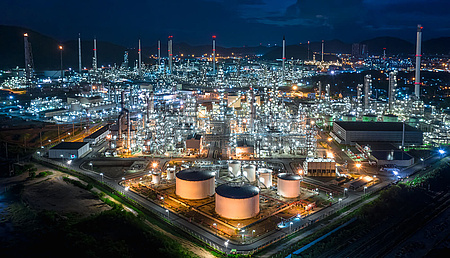
Understanding the Brazilian green patent fast-track
Obtaining a patent in Brazil is a lengthy process. However, the Brazilian Patent and Trademark Office (BPTO) makes provisions for an expedited substantive examination and grant of patents for environmentally beneficial technologies.
Patent protection is essential in emerging economies as it promotes "cutting edge" technology, transfer arrangements with local manufacturers and economic growth as a result of foreign direct investment in new geographic markets with robust patent protection. The Instituto Nacional da Propriedade Industrial (INPI), also known as the BPTO, has a severe backlog of unexamined patent applications and, due to the large pendency, the technology covered by the application may no longer be "cutting edge" by the time the patent issues. This probably has a negative impact on investor’s ROI (return on investments).
Among the different rapid-results initiatives of the BPTO, some of which were already addressed in an earlier article, the fast-tracking green patents or Green Patent Priority Examination reduces the pendency of patent application to about two or three years. The current average is of not less than 10 to 12 years for an ordinary patent application to pass to allowance, with the alternative or minimum term of protection which is 10 years from the date of grant (!) as provided for in Art. 40, Sole Paragraph.
The Brazilian expedited grant cuts down the time for obtaining protection for new technologies, bringing licensing agreements into existence. BPTO has been running this fast-track program since 2012 and, because of its success, it became a permanent feature in December 2016 under Resolution No. 175/2016. The World Intellectual Property Office’s International Patent Classification Green Inventory forms the basis of the technologies that are eligible to the Green Patent Expedited Grant.
The list is extensive and includes:
- Renewable energy generation;
- Solar, wind, hydro, wave and tidal;
- Biofuels, energy storage technologies such as fuel cells and high-performance batteries;
- Energy efficiency and energy infrastructure;
- Transportation, water filtration and wastewater treatment;
- Air and environment pollution reducing systems;
- Building materials, manufacturing or industrial agriculture;
- Recycling waste material and, while "not on the list," devices with improved serviceability or easy maintenance.
Concerning the subject matter, it is important to remember that prosecution with the Patent Office might raise objections to inventiveness or non-obviousness because environment-friendly inventions are, in most cases, derivative or incremental improvements. Description sufficiency in the application is instrumental, and it must contain an indication on "how" and "why" the use of a production process applied in a known manufacturing process reflects a different purpose when used to produce a new component — for example, solar cells. It is further advised to include arguments for the unpredictable technical effect by the use of a combination of elements to avoid an obviousness rejection.

No more than fifteen claims are admitted in the application. Further to that, the application may have no more than three independent claims although multiple dependent claims are allowed. A preliminary amendment is also allowed to bring the application in compliance with the requirement of the claim. The application must have already been published or at least an anticipated publication request must be filed. It is also required that no office action was issued.
Strengths and opportunities for green patent applications in Brazil are vast. In numbers, by way of example and according to the official Energy Research Office statistics, Brazil is the third largest global market and the largest Latin American market for renewable energies. Renewables amount to 42% of the Brazilian primary energy supply. Breaking down the 50.644 MW installed capacity, wind generators contribute with 12.541 MW doubling in 5 years, small hydro with 2.752 MW, Biomass accounts for 581 MW, PV (Photovoltaics) Power with 150 MW, Hydro generation with 34.620 MW.
There are no NPP (non-practicing patentees) threats in Brazil, and there are grace period provisions available. The conversion of a patent of invention application with apparatus claims into a utility model application in the course of substantive examination is allowed but what matters is that once the application is allowed to join the Green Patent Expedited Grant, the application jumps to the front of the line for examination.
For assistance and further information in this regard, please contact:
Claudio Szabas
Dennemeyer & Associates Propriedade Intelectual Ltda.
Av. Nilo Peçanha 50/1516, 20020-906 Rio de Janeiro RJ Brazil
Phone: +55 21 2215 9550
E-mail: cszabas@dennemeyer-law.com

The energy sector is undergoing explosive change. Explore IP law's invisible contribution to this shifting landscape and where progress is likely to lead.



